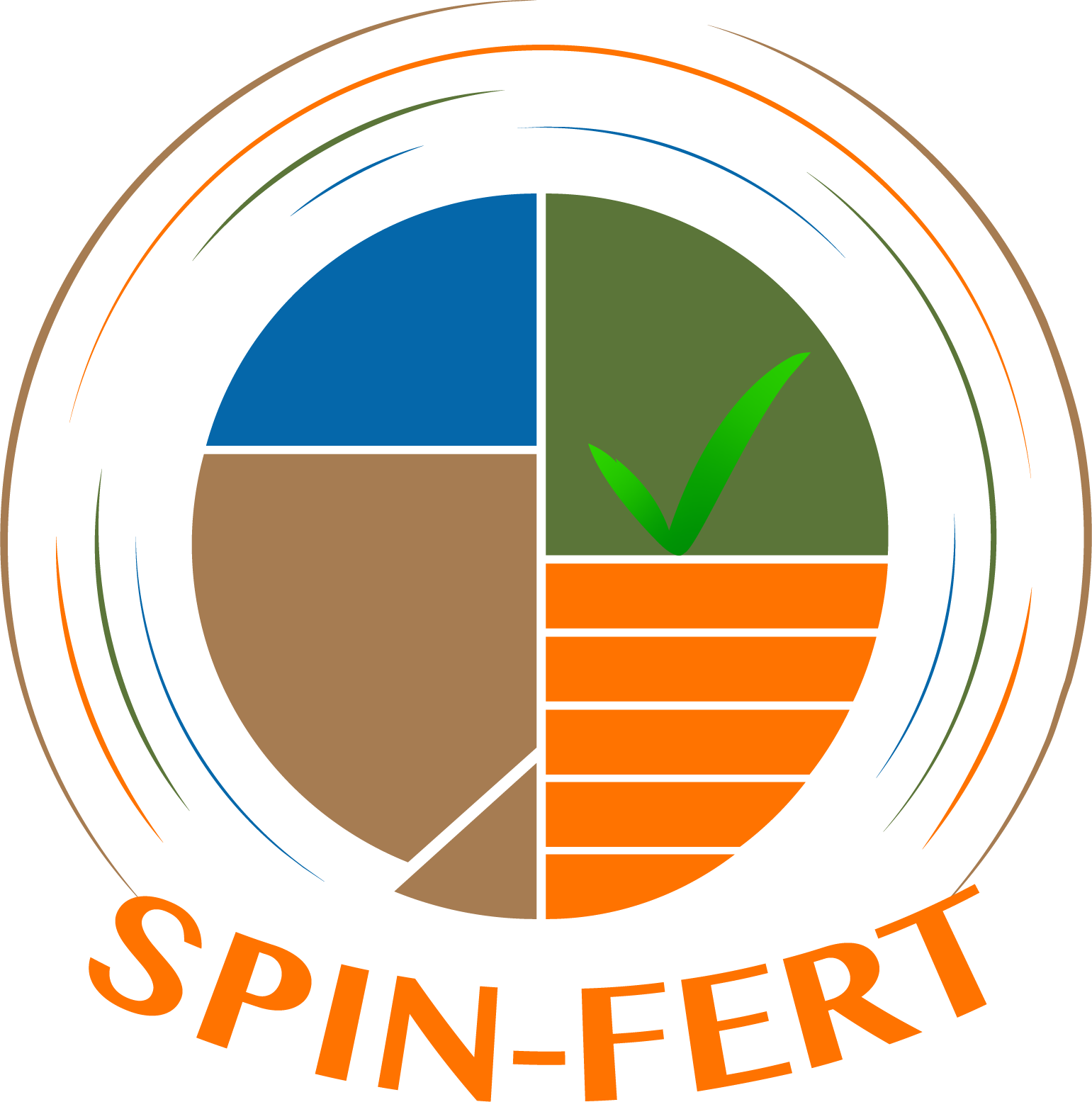
- This event has passed.
SCIENCE-ART-EDUCATION: Earth and Wetlands
November 26, 2024 All day
Poznań, Poland
Science-Art-Education: Earth and Wetlands
Visit of students of the University of Arts in Poznan to the Faculty of Geography and Geology at Adam Mickiewicz University, Poznań / the Museum of Earth and the Unit for Climate Change Ecology Research
On 26th of November, art students from the Studio for Transdisciplinary Projects and Research run by Prof. Joanna Hoffmann (FASSF/ASN) at the University of Arts in Poznań visited the Faculty of Geography and Geology at Adam Mickiewicz University, engaging in a multidisciplinary exploration of earth sciences. The visit offered a unique blend of educational insights, hands-on workshops, and inspiring discussions on the significance of geological and ecological processes.
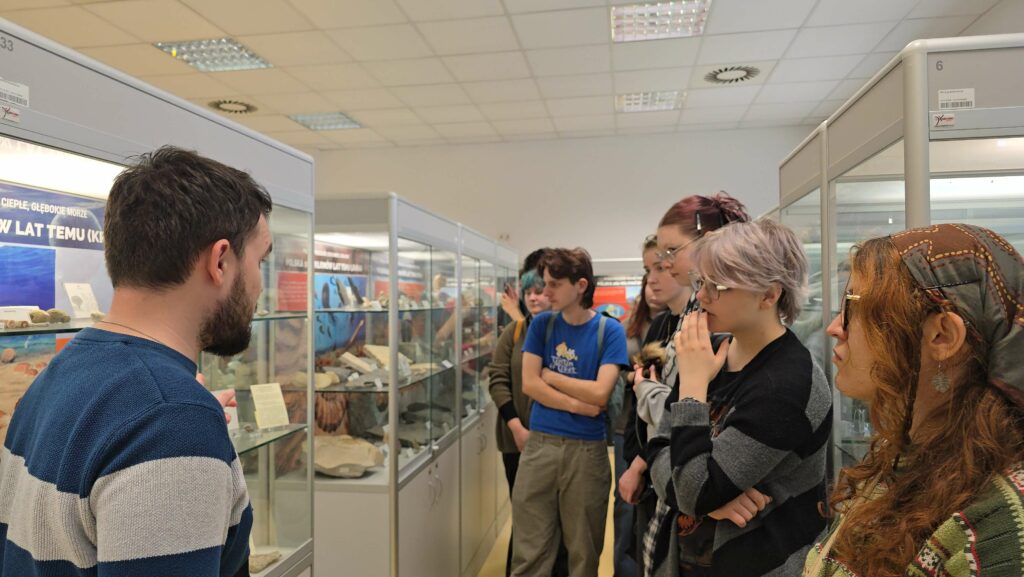
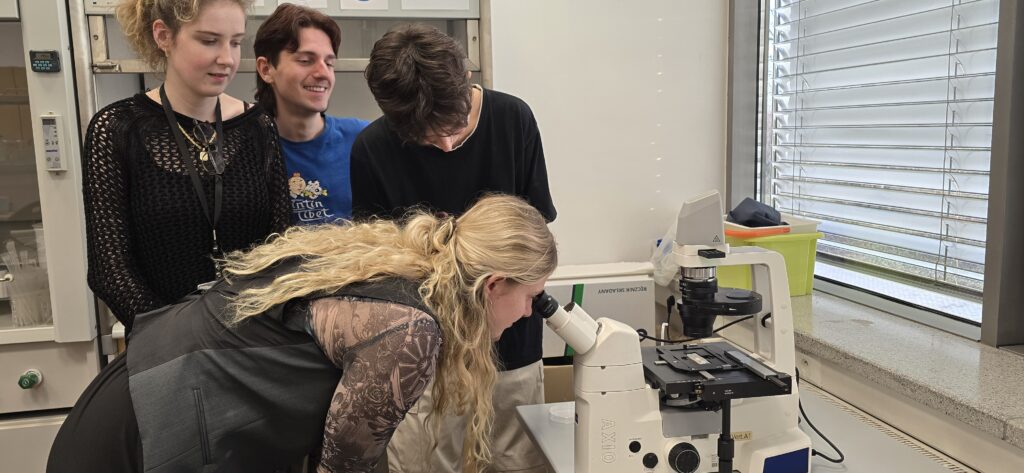
Visit to the Museum of Earth
The visit began at the Museum of Earth, where students were introduced to the geological history of Central Europe. Through an engaging presentation and exhibits, they gained an understanding of the dynamic transformations of the region’s environment over millennia. Key topics included the formation of rocks, climate changes and evolution, shedding light on the fundamental processes that shape our planet. The diversity of the museum exhibition allowed students to combine scientific phenomena with artistic inspirations and take a more personal and in-depth approach to the Earth’s natural history.
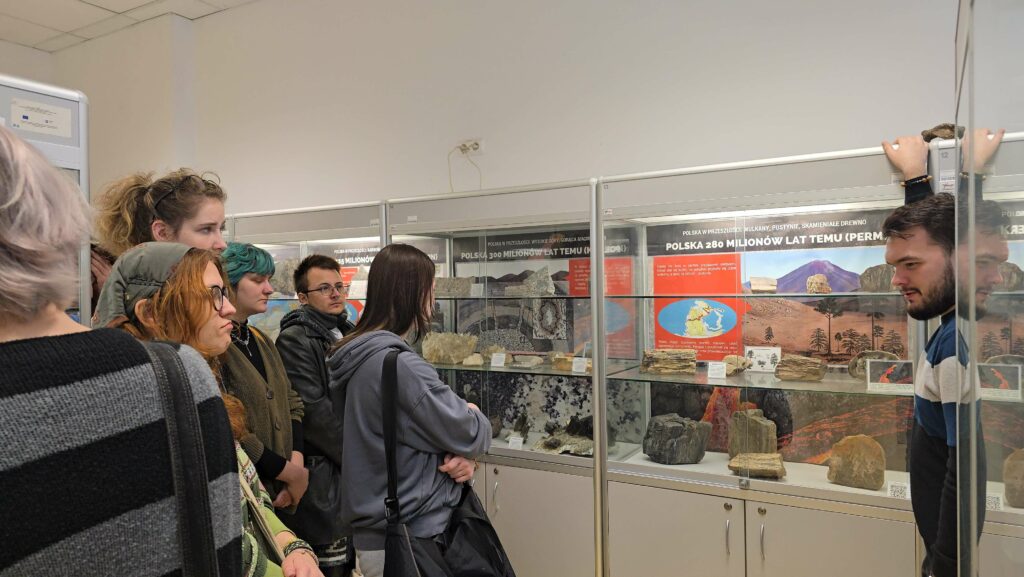
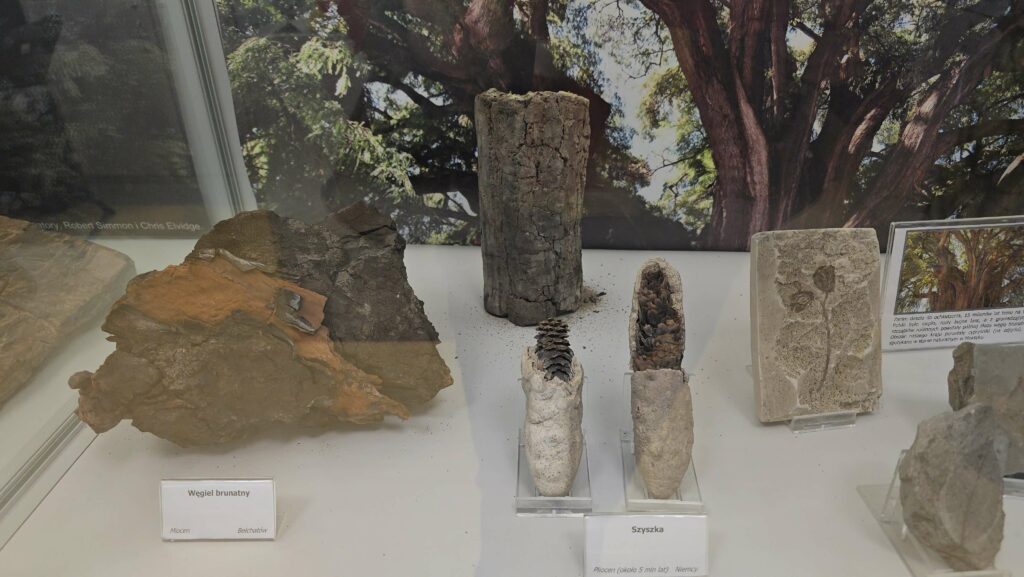
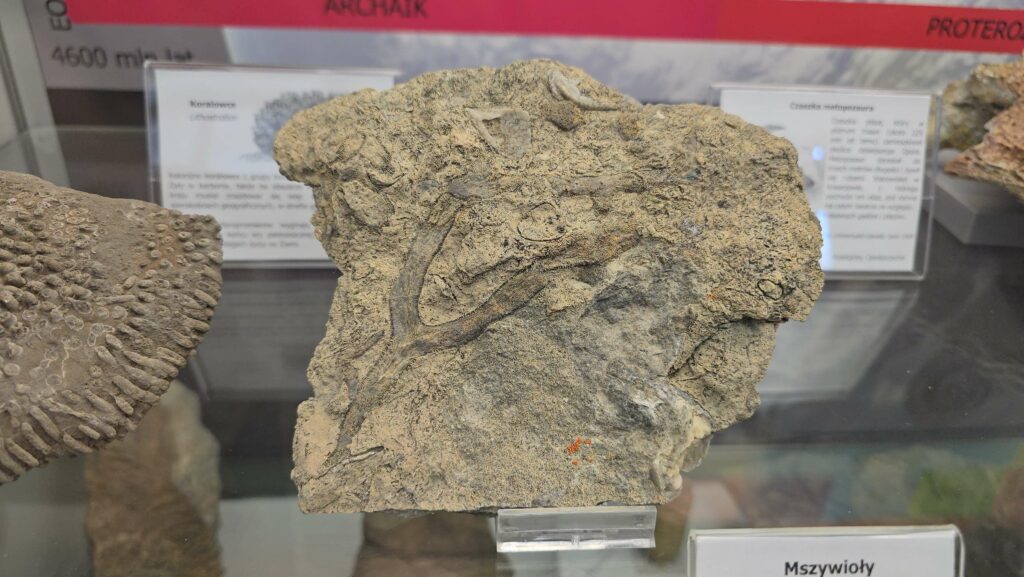
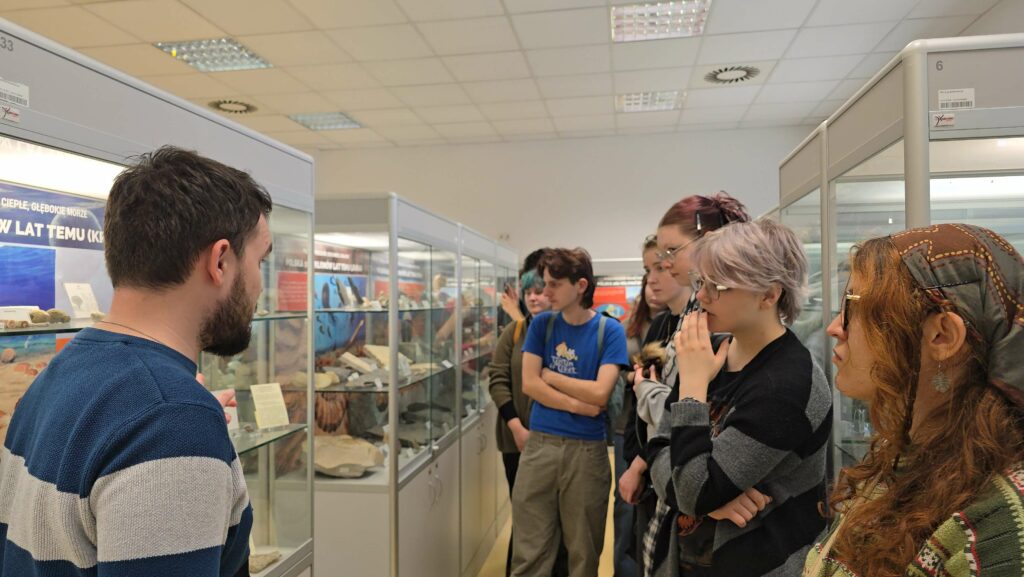
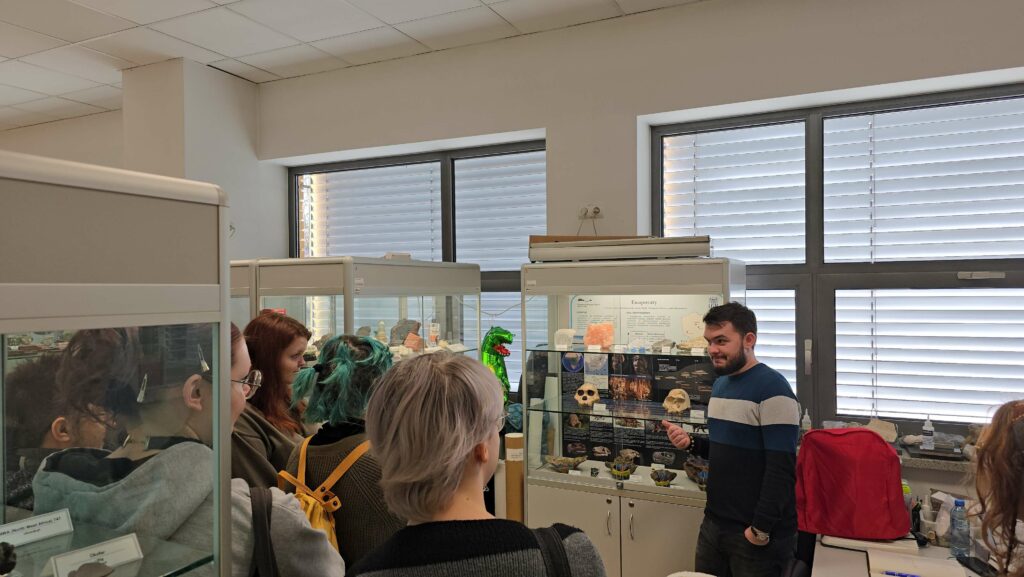
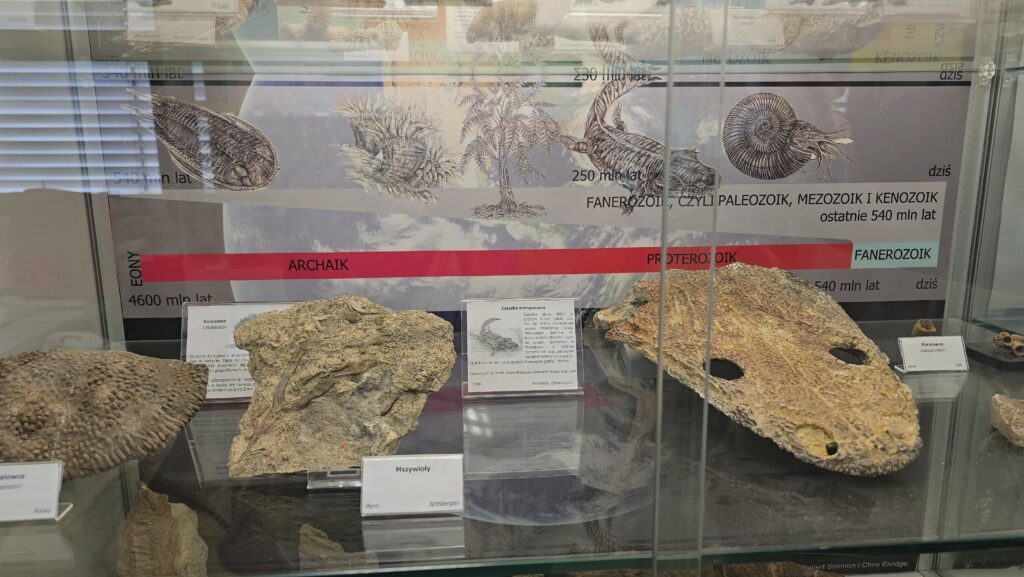
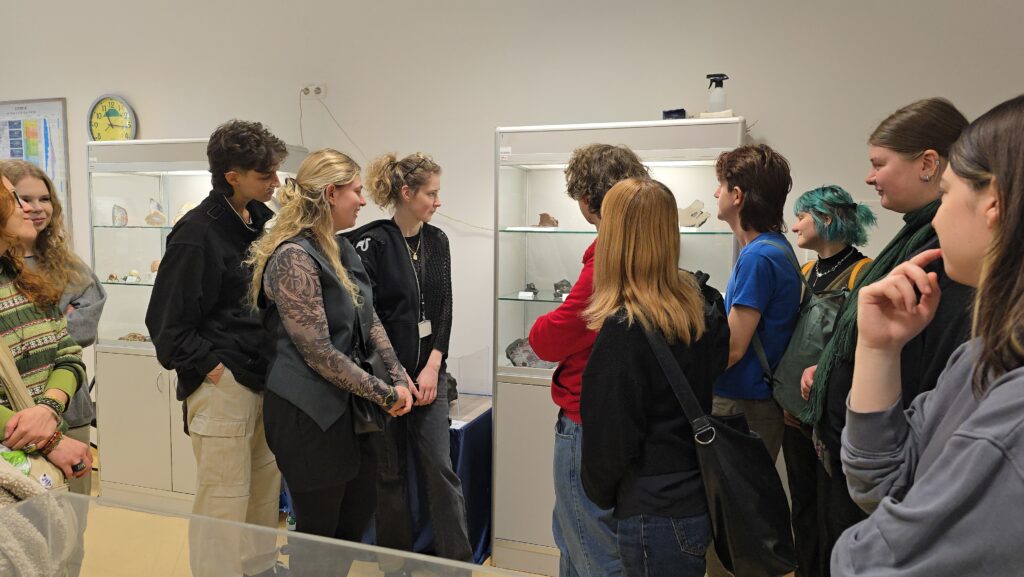
Workshop on Peat Core Analysis with Prof. Mariusz Lamentowicz Team / Unit for the Climate Change Ecology Research
Following the museum tour, the students met Prof. Mariusz Lamentowicz, head of the Climate Change Ecology Research Unit, and his PhD students Daria Wochal and Mariusz Bąk, who prepared a workshop for them. The session focused on a peat core extracted from the Kusowo Peatbog, covering an impressive 1,200 years of environmental history.
During the workshop, the students were introduced to:
- Sample Preparation for Microscopic Observation: They learned the meticulous process of preparing peat samples, an essential step in understanding their composition.
- Peat Composition Analysis: Insights were provided into the layers of peat and their reach organic composition.
- Spruce Amoebae as Environmental Indicators: The role of these microorganisms in reflecting historical environmental shifts was explained, highlighting their significance in reconstructing past climates and ecosystems.
Scientists’ vivid explanation of peat cores as “history written in coal” (Prof. Lamentowicz) resonated strongly with the group. The workshop emphasised the critical importance of peat bogs and wetlands, ecosystems that are increasingly under threat due to overexploitation and climate change. Students were fascinated by the scientific process and deeply moved by the ecological message, fostering respect for these vulnerable habitats.
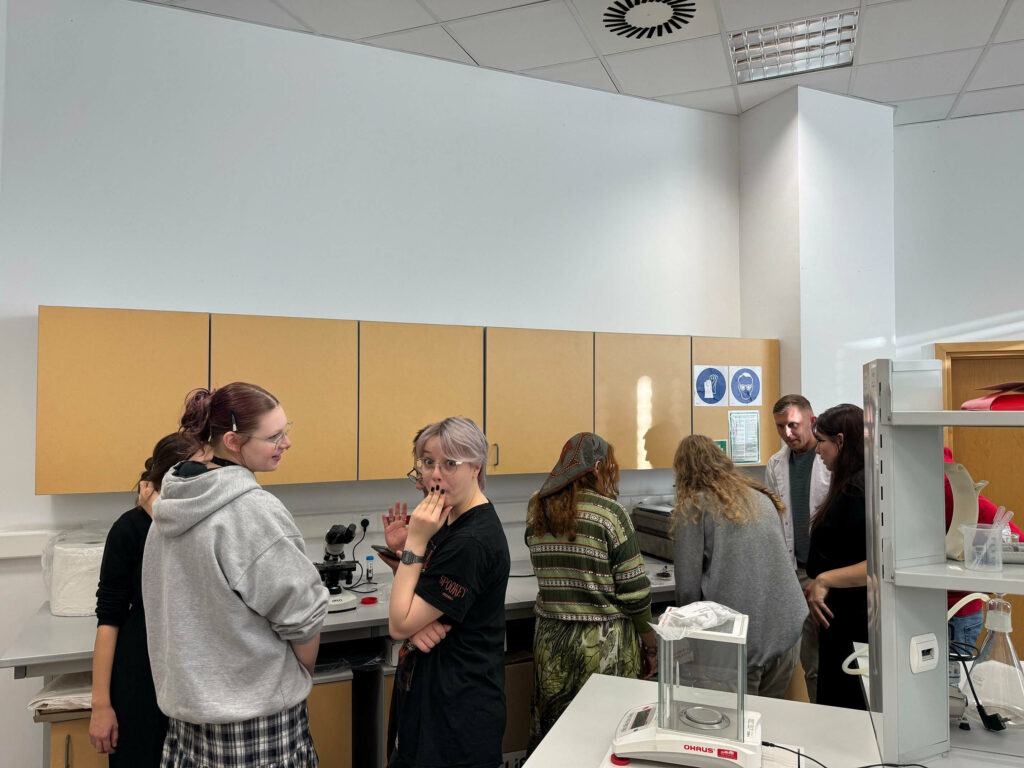
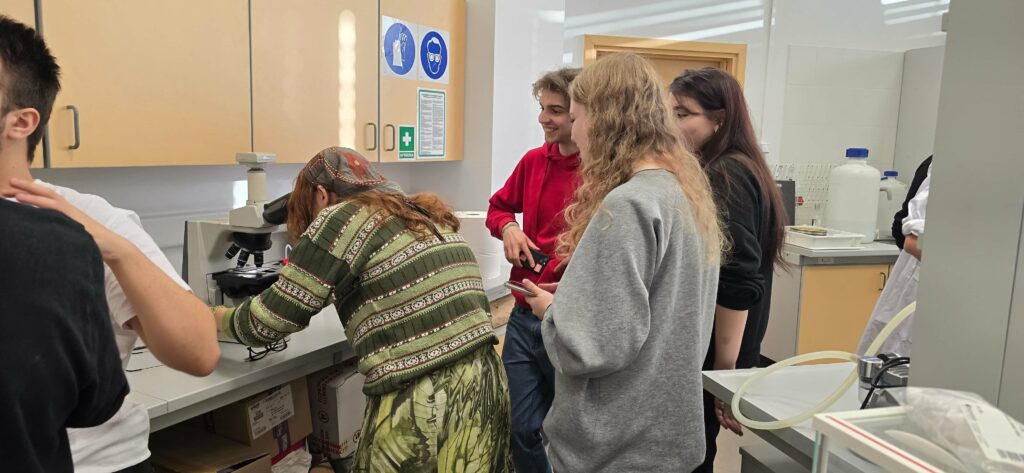
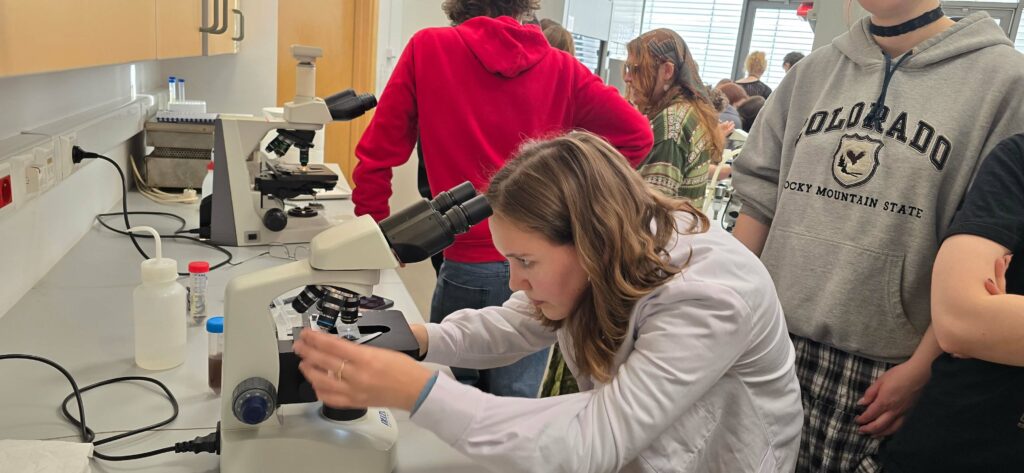
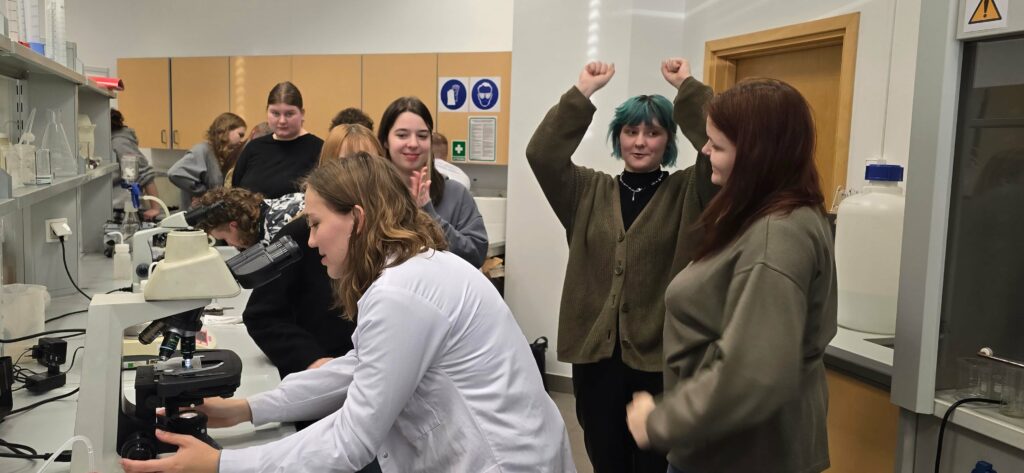
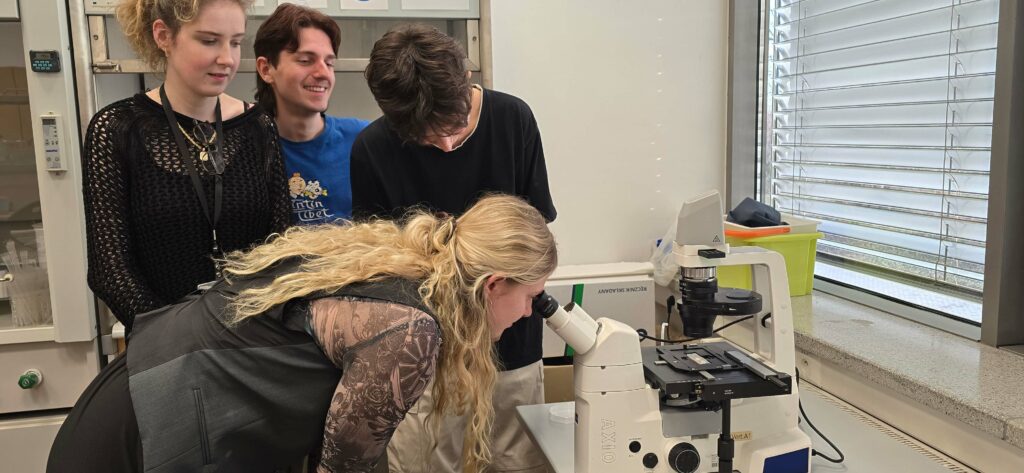
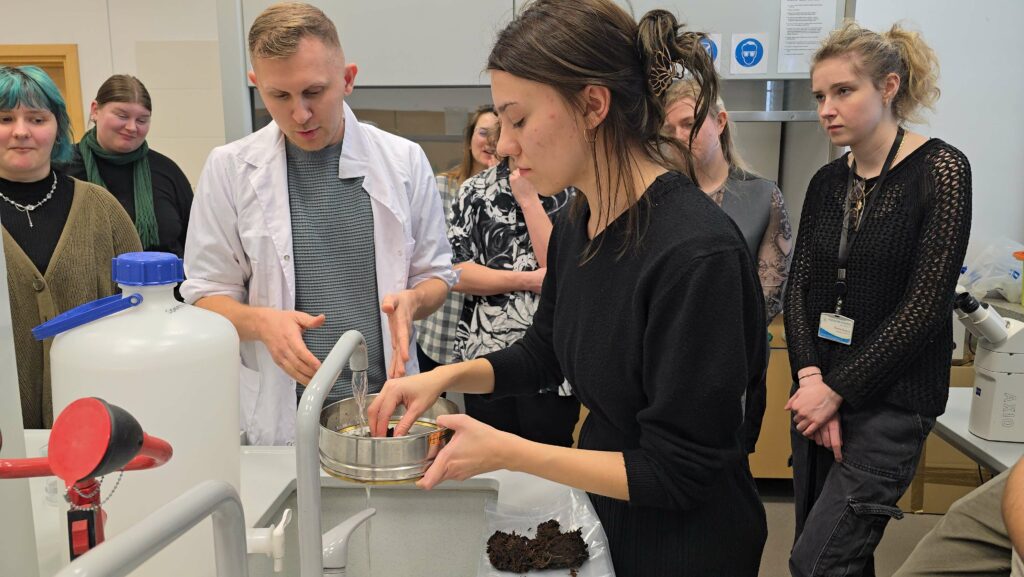
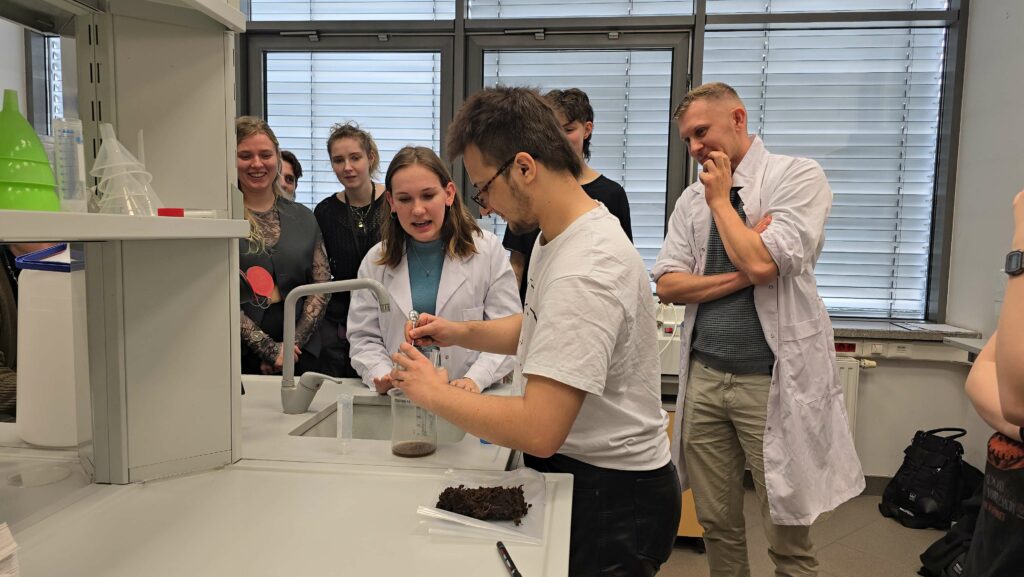
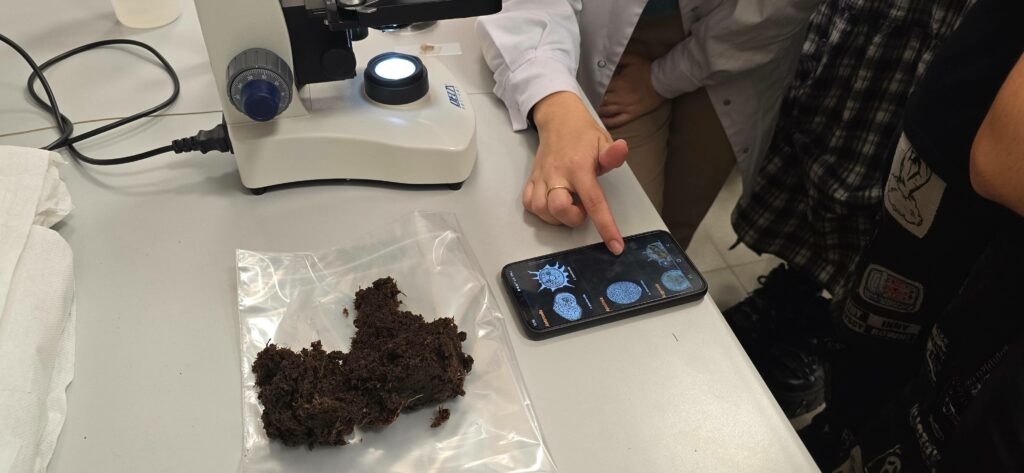
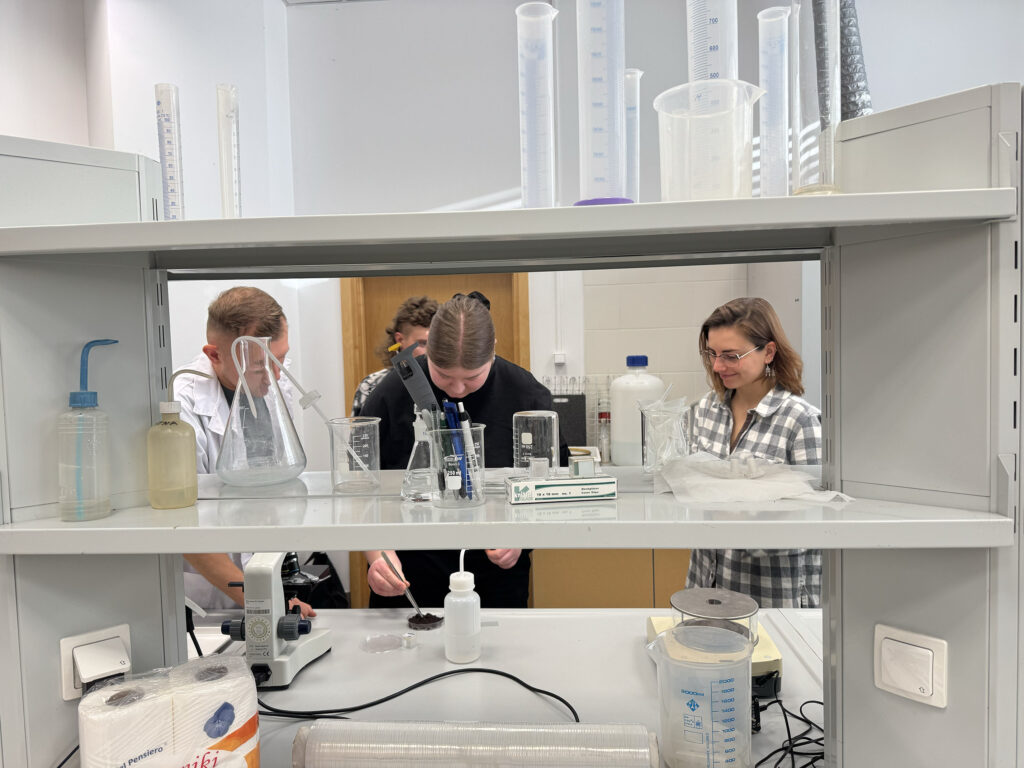
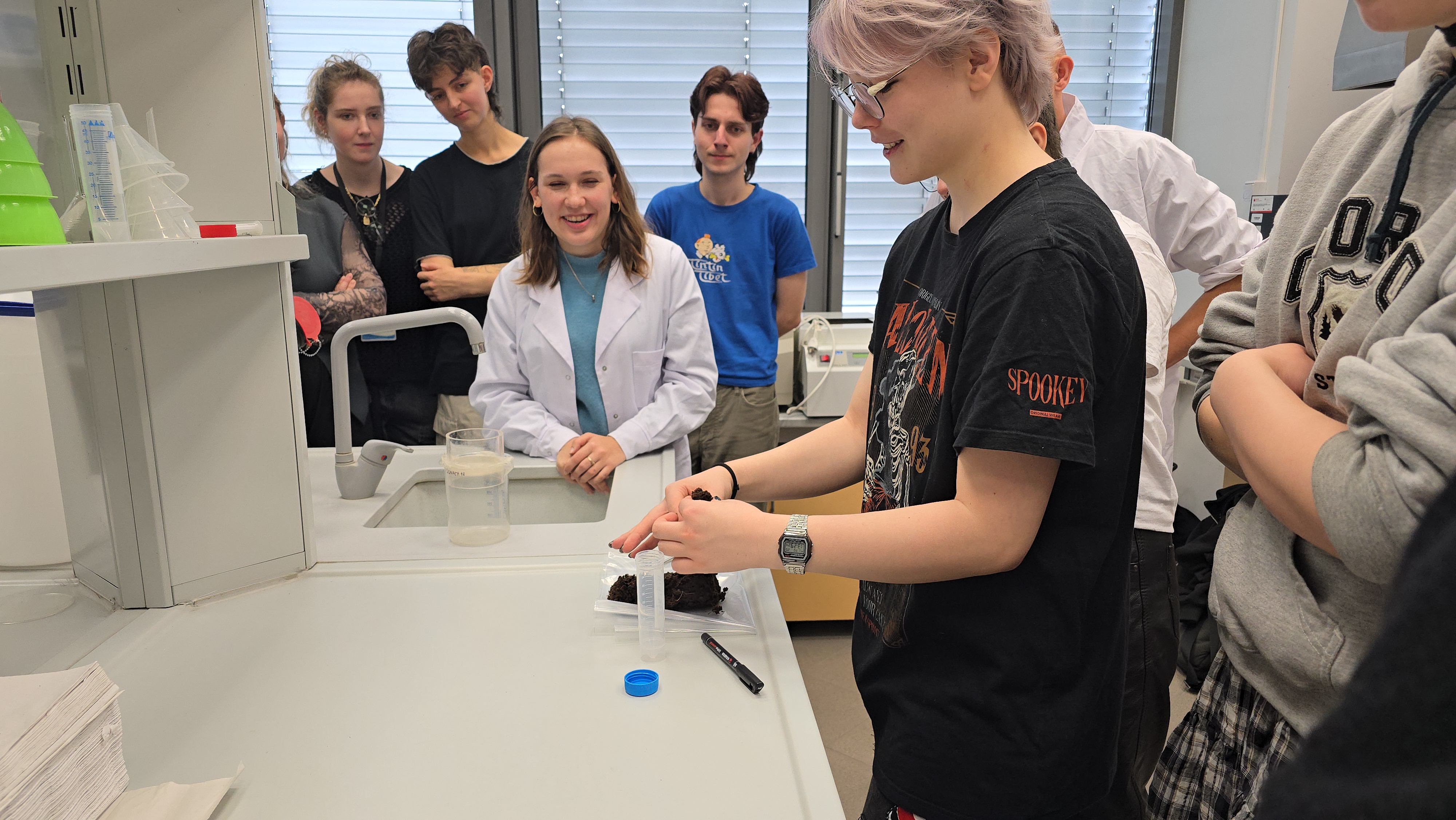
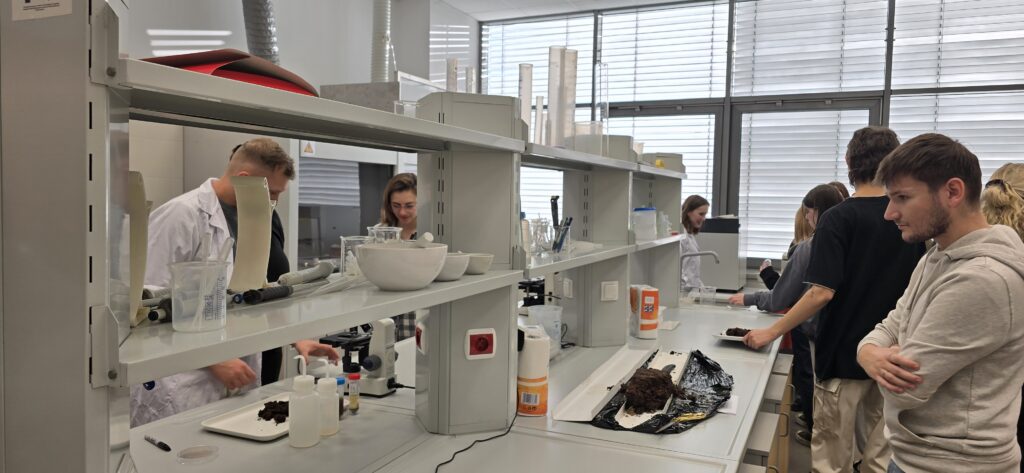
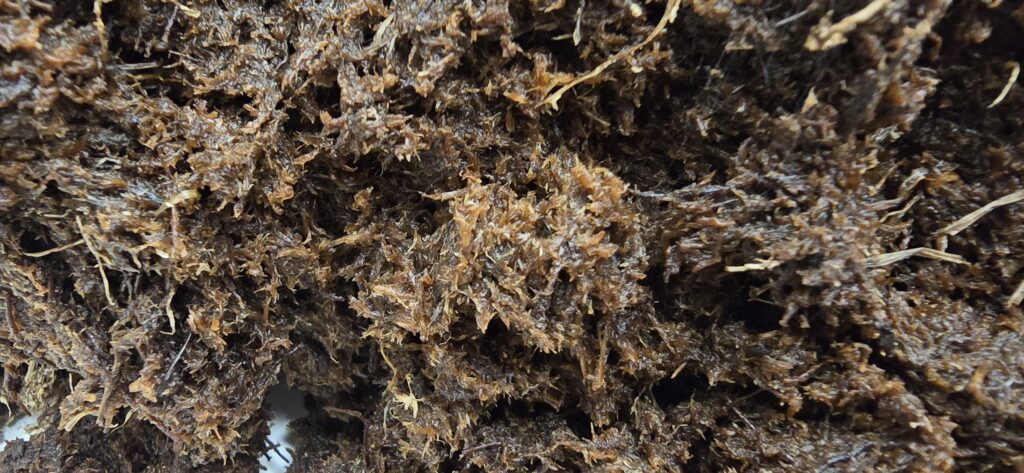
Reflections and Outcomes
The workshop and museum visit were met with great enthusiasm for the interdisciplinary approach that connected science, art, and ecology. The exploration of the peat core, in particular, inspired a newfound curiosity about the intricate stories embedded in Earth’s natural resources. For many, the experience underscored the urgency of conserving wetlands and their invaluable insights into the environmental history and human impact.
This visit highlighted the importance of collaboration between the arts and sciences in fostering dialogue and appreciation across disciplines, inspiring to further activities.
